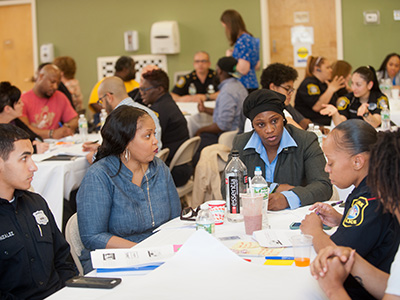Pillar 1: Social & Cultural

Newark’s public safety ecosystem is connected by hard-earned open channels of communication. The connections are widespread and multidirectional, ranging between the local community, organizers and grassroots leaders, police, city officials, local/national funders, and partner organizations. This network takes shape through a variety of in-person and virtual meetings, informal calls, cookouts, Trauma to Trust workshops, and more. Every format has been vital in building towards sustainable public safety in Newark.
 Newark’s public safety ecosystem is connected by hard-earned open channels of communication. The connections are widespread and multidirectional, ranging between the local community, organizers and grassroots leaders, police, city officials, local/national funders, and partner organizations. This network takes shape through a variety of in-person and virtual meetings, informal calls, cookouts, Trauma to Trust workshops, and more. Every format has been vital in building towards sustainable public safety in Newark.
Newark’s public safety ecosystem is connected by hard-earned open channels of communication. The connections are widespread and multidirectional, ranging between the local community, organizers and grassroots leaders, police, city officials, local/national funders, and partner organizations. This network takes shape through a variety of in-person and virtual meetings, informal calls, cookouts, Trauma to Trust workshops, and more. Every format has been vital in building towards sustainable public safety in Newark.
Newark’s South Ward Public Safety Roundtable is a powerful example of how members of the Newark Community Street Team and Equal Justice USA, through strategic facilitation and coordination, have managed to sustain and grow a space where neighbors can air questions about safety that reposition them not as beneficiaries (or “targets”) of specific policies, but as owners, guardians, and managers of their environment.
Much has been said about the futility of most forms of police-community meetings that do not involve a paradigm shift in the structure of these conversations. In Newark, however, such a process is well underway. Neither the city government nor the police is running the meetings of the Public Safety Roundtable. While statistics matter, they are not deployed in a way that subordinates citizens to the expertise of researchers and officials. Lived experience matters. There is accountability.
It’s important that interactions involving community organizations and city officials are not overtly grounded in the type of adversarial or instrumental motivations seen elsewhere in the country. Instead, the work should remain focused on building a citywide infrastructure for collaboration that capitalizes on the unique strengths, expertise, and lived experience of the key actors in the system.


